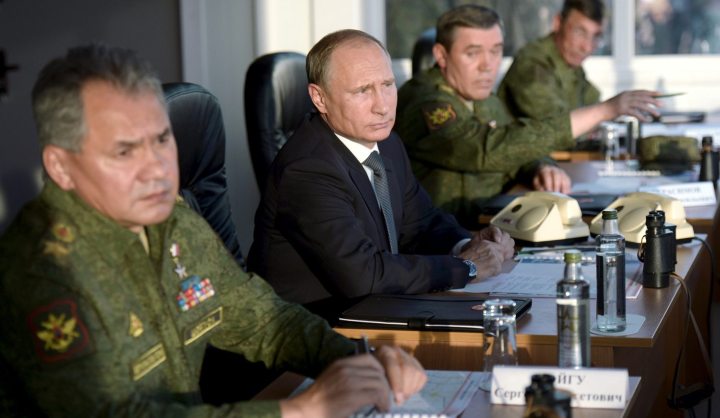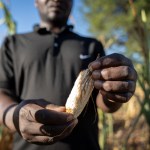World
ICG: The Not-So-Frozen Conflicts on Russia’s Borders

East of the European Union remains a potential source of instability for the continent, with five of six designated ‘neighbourhood partners’ locked in sovereignty disputes. Russia, of course, is playing a significant role. But while power politics is often framed as a winner-takes-all scenario, the truth is that no one benefits from an extended stand-off. By Magdalena Grono for the INTERNATIONAL CRISIS GROUP.
First published by the International Crisis Group.
Of the six countries singled out by the European Union (EU) as its eastern neighbourhood partners, five are locked in disputes over regions that have claimed independence. Two of these regions have been recognised by Moscow, and Russia is closely engaged in all of them.
These standoffs, several dating back to the collapse of the Soviet Union in 1991, are a genuine security and political challenge in a neighbourhood where the EU’s association and Russia’s integration projects are now deadlocked. And though some of these regions say they rely on Russia for security, for Moscow they have been an instrument, one among many, for exerting pressure on the countries it sees as belonging to its sphere of privileged interest.
The conflicts that have plagued Georgia, Moldova and Ukraine have brought to life the self-proclaimed republics of Abkhazia, South Ossetia, Transnistria, Donetsk and Luhansk. Nagorno-Karabakh is the subject of an unresolved war between Armenia and Azerbaijan. Only Belarus is spared such divisions.
In eastern Ukraine, for instance, the 2015 ceasefire signed in Minsk is largely holding. But as argued in International Crisis Group’s latest briefing, Russia and the Separatists in Eastern Ukraine, most of the agreement’s provisions are yet to be implemented and timeframes have slipped from 2015 into 2016. The Minsk agreement remains a vital possible path to resolution, but the Minsk process risks becoming a substitute for settlement. For eastern Ukraine, that would mean a long, brittle standoff.
Security concerns and geopolitics are not the only reason to focus on the region’s protracted conflicts: nearly 1 million people inhabit Abkhazia, Ossetia, Nagorno-Karabakh and Transnistria, stuck in limbo since the 1990s; the entities in Ukraine’s Donbas are now home to some 2.7 million. Few of roughly 1 million displaced by conflicts in Abkhazia, Ossetia, and Karabakh have been able to return home; the figure is nearly 2.6 million for Ukraine, both within the country and as refugees.
Formal conflict resolution processes are well established in the older conflicts, even if the format changed in Georgia after Russia’s 2008 military engagement in South Ossetia. In each case, Moscow does not see itself as a party to the conflicts, or as an actor other than a guarantor of stability in the region. The EU has sought to support conflict resolution, but has struggled with the tricky issue of the disputed status of the territories, and only has a lead role in the Geneva Discussion for the crisis in Georgia. The resolution processes with regard to Transnistria, Nagorno-Karabakh and now Donbas are mediated by the Organization of Security and Cooperation in Europe (OSCE).
But aside from Ukraine, these processes have an inherent limitation: there is no deadline or pressure for resolution. And all of them have slipped into a more or less comfortable political and diplomatic routine. They are unlikely to produce a real settlement as long as geopolitical interests of key players remain divergent.
These processes are important regardless: they have helped manage the conflicts, and the security risks and politics around them. This achievement should not be underestimated: the Geneva Talks scrupulously review security on the ground in Abkhazia and South Ossetia and address some of the important humanitarian issues; in Transnistria, the 5+2 process has dealt with some difficult political issues, such as the language of education; the Minsk Group process for Nagorno-Karabakh provides a framework in which Russia, the US and France can prompt the parties not to allow sniper fire and other violations along the line of contact to degenerate too far.
Effective management may mitigate short-term risks and humanitarian hardships, but replacing substance with process has not led to long-term solutions anywhere on Russia’s periphery.
In Ukraine, the EU and the international community should back with sanctions the resolute implementation of the Minsk agreement, while insisting that all parties take full responsibility for doing their share. In parallel to considering greater cooperation on some mutually beneficial global and regional agendas – from Syria to anti-terrorism to possibly trade – they should discuss with Moscow ways of genuinely bringing down tensions in Donbas, such as by low-profile withdrawals of units that are still stationed there.
The “frozen” look of these conflicts is an illusion too, and regional links raise stakes. The war in Ukraine illustrates the risks when Moscow’s political agenda clashes with that of the Western powers. Support for and cooperation with the conflict regions is a key instrument in Moscow’s regional strategy. Constituencies in Turkey, meanwhile, have had strong ties with Abkhazia, and Ankara has backed Azerbaijan on Nagorno-Karabakh. Iran’s re-entry into global politics has potential consequences for the region too, as a neighbour of both Armenia and Azerbaijan, and with warm ties to Yerevan.
Although Moscow has strong links to all the regions and there is economic and security dependency, domestic dynamics cannot be ignored. Abkhazia and Nagorno-Karabakh have particularly strong political agency. Finally, endemic corruption within these regions means there are many wild cards that must be taken into account that even complicate their ties with Russia.
Similarities between the conflicts only go so far. Russia or no Russia, a deal will always be hard to strike between the Georgians and the Abkhazians or Ossetians, or between Armenians and Azerbaijanis. Many of these communities have lived on opposing sides of deep political and physical divides for over twenty years. Their original grievances, dating back to deep Soviet times, have been layered over by newer grievances of vicious fighting as the Soviet Union fell apart, and years of isolation since.
There will be no miracles. But neither Russia nor the EU is ultimately winning from protracted standoffs. And until such time as the geopolitical standoff between Russia and the EU eases, progress on practical issues can be made if the sides work harder to resolve their differences and bring normalcy to the cut-off populations of these disputed territories. DM
Photo: Russian President Vladimir Putin (C) with Defence Minister Sergei Shoigu (L) and armed forces Chief of Staff Valery Gerasimov observe troops in action during a training exercise at the Donguz testing range in Orenburg region, Russia, September 19, 2015. REUTERS/Alexei Nikolsky/RIA Novosti.


















 Become an Insider
Become an Insider